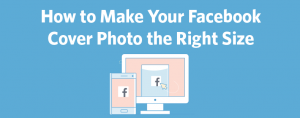Stay ahead of changing regulations and consumer sentiment with these privacy-centric solutions for marketers.
Data protection and privacy are at the forefront of marketing conversations today as consumers demand greater control over their data. This year will see a renewed emphasis on regulatory compliance as five additional U.S. states roll out new privacy legislation. ?
Between growing consumer concerns, technological changes and mounting data protection legislation, companies that do not address the need for data privacy will inevitably take a hit, especially in terms of user confidence, credibility and reputation.
This article covers three privacy-centric solutions for marketers looking to comply with privacy regulations.
Data privacy compliance in marketing
Courts are increasingly holding companies accountable for flouting data privacy regulations. We can expect to see more of these cases in the coming year.
The news of large retailers getting sued or fined for privacy breaches is having an impact on consumers. Their increased awareness of the data collected for tracking and marketing has raised the expectations around privacy protection. We must adopt privacy-centric marketing solutions to cater to changing consumer demands.
While third-party cookies reigned supreme in the early and mid-2000s, they are blocked in Safari and Firefox today. Edge limits some third-party cookies, and Google is working to phase them out in Chrome by 2024.
Luckily, marketers have a variety of privacy-centric solutions to help them stay ahead of changing regulations and consumer sentiment.
Privacy-centric solutions for marketers
There is no one-size-fits-all solution to privacy matters. Organizations must weigh their options to identify appropriate solutions catering to their specific needs. As marketers, we can — and should — use multiple solutions to become more privacy-centric.
With the sheer number of solutions, knowing what is right for your business and how to prioritize can be hard. Server-side tagging and conversion APIs, consent management platforms and Google’s Consent Mode are good places to start.
1. Consent management platforms
While other privacy-centric solutions are nice-to-haves, consent management platforms (CMPs) are virtually mandatory. CMPs are crucial in blocking cookie usage unless users consent to storing and tracking their data.
CMPs help you gain insight into the personal data lifecycle to track and respond to consent preferences. A correctly installed CMP can minimize the impact on marketing teams and build more content-driven and profitable relationships with today’s privacy-focused customers.
As legal requirements differ by jurisdiction and user experiences vary between device categories and browsers, CMPs must be customizable. Website visitors should easily understand the cookie banner when asking for consent to track cookies.
Moreover, the cookie banner should match the look and feel of the brand’s website and be easy to use. If your company needs a CMP, keep a few questions in mind: Which CMP balances out user expectations, data collection needs, legal requirements and is easy to use?
2. Server-side tagging and conversion APIs
Server-side tagging and conversion APIs are among the most mature and best-tested solutions to increase privacy resilience for marketers. Rather than sending network requests to and getting responses (including cookies) from third-party vendors, you only need to add a proprietary, cloud-based solution in between that grants you:
- Full access and control over the data collected.
- The ability to transform it before passing it on to vendor platforms.
For example, server-side tagging in Google Tag Manager (GTM) allows for data collection in a server container in Google Cloud. With Conversions API, we can share key events — both on and offline — with Meta. Setting up server-side tagging in GTM can help you easily deploy Facebook’s Conversions API on top.
Server-side tagging and conversion APIs address multiple challenges simultaneously:
- No third-party cookies are used that can be restricted by browsers or browser extensions.
- Data can be transformed, including anonymized and masked, before being passed on to vendors (data endpoints).
- The client load is reduced by removing code such as JavaScript libraries from having to load in the browser.
3. Consent mode
Consent mode is among the additional privacy solutions Google offers to bridge the gap between legislation, user experience and tracking. It is a GTM feature that integrates with many CMPs — including OneTrust and Didomi — to orchestrate GTM tags based on users’ opt-in or opt-out preferences.
If a user opts out of cookies, consent mode sends cookieless pings to Google servers to model traffic of opted-out users in Google platforms, including Analytics and Ads. These cookieless pings are considered compliant with existing privacy legislation by Google.
They do not contain personal information, but it’s always important to consult your corporate counsel to ensure compliance.
Moving forward with privacy-centric solutions
Everyone providing online services ought to know their clientele and corresponding expectations well, including their existing user base and total addressable audience. Work with your legal and UX/UI teams to identify appropriate solutions for the changing ecosystem. Those solutions need to be frictionless, user-friendly and legally and technologically compliant.
Depending on your investment in media, work with vendors and media partners to identify solutions that mitigate the impact of tracking limitations. Most importantly, ensure that your consent/cookie management is compliant in all jurisdictions you operate in.
The world of privacy-centric solutions is vast. Investing in multiple platforms that work in tandem with one another can help ensure compliance with regulations and consumer mindsets while measuring the success of your marketing campaigns and generating ROI.
The post 3 privacy-centric solutions for marketing compliance appeared first on MarTech.
MarTech(9)
Report Post







